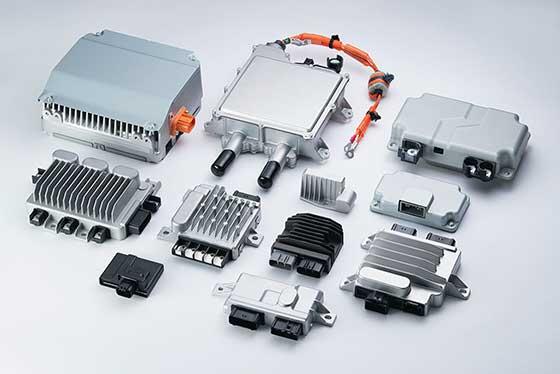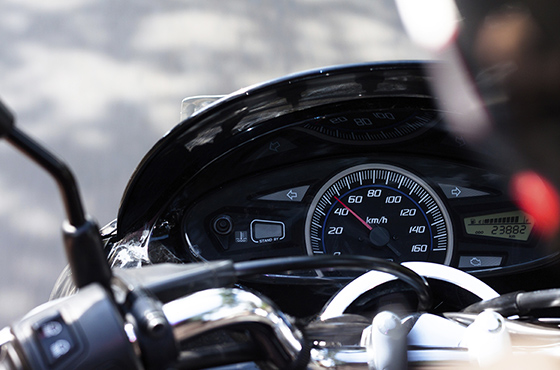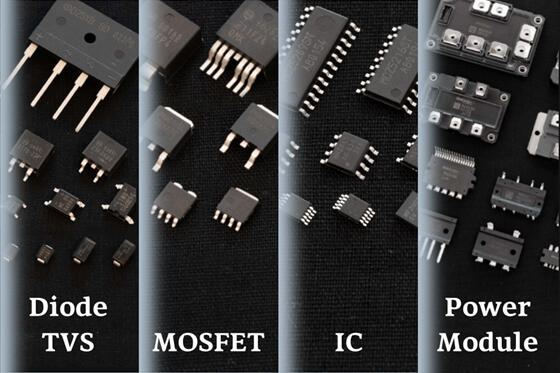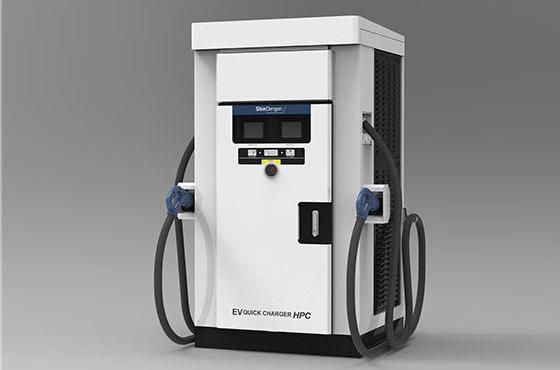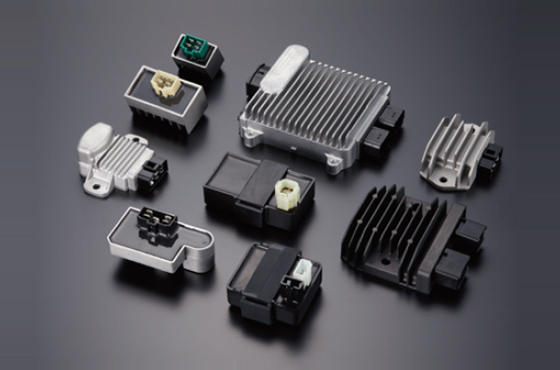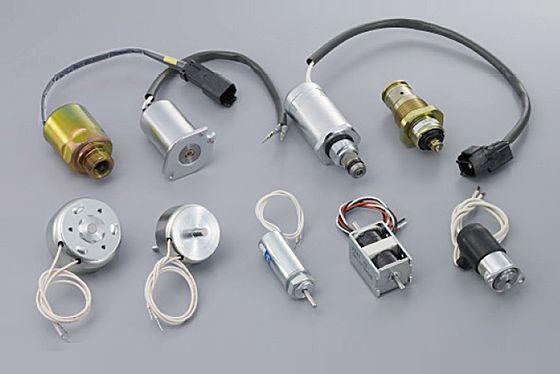Development History
The idling stop ECUs that we have been mass producing since 2002 feature complex functions used in, for example, start motor control, battery charging control and fuel injection control (FI). We have been a pioneer with idling stop ECUs used in the small motorcycle (two-wheel vehicle) market, and have helped support environmental regulations for motorcycles and other two-wheel vehicles.
Pollution in the atmosphere has been viewed as a global problem due to the carbon monoxide and nitrogen oxide contained in automobile emissions, which has led each country to establish emission regulations. Emission levels for atmospheric pollutants are becoming stricter over the years, requiring improvements in the emission performance of newer models even for the same type of car.
In motorcycles and other two-wheel vehicles, emission regulations have been enacted in Europe and Japan since 1998, and the regulation levels have become stricter in EURO3 in 2006 and again in EURO4 in 2016. EURO5 will be enacted in 2020, and the regulations are expected to become even stricter. The emission regulations will not just be applied to advanced countries such as Japan and in Europe, but EURO3 has also been enacted in Indonesia and Vietnam as well.
In 2020, EURO5 is expected to also be enacted in India, which has the largest market in the world. In order to pass the requirements of these regulations, motorcycles and other two-wheel vehicles must shift from using a carburetor to a FI system. This will translate into more types of sensors and loads on the vehicles than previously installed up until now. As a result, the footprint for the ECU that provides FI control will become even more limited and downsizing and multi-functionality will be more necessary than ever.
In the Indian market, when considering how motorcycles and other two-wheel vehicles are used, there is a potential demand for an idling stop function, where the engine can be turned off temporarily while waiting at a traffic light. On the other hand, there is a risk that the motorcycle market may become stagnate because the purchasing power of consumers may not be able to cover the price increase in vehicles cause by these emission regulations. As a result, multi-functionality and downsizing must be streamlined to bring down costs even more.
We will be using our ECU technology that we have cultivated up until now to work on multi-functionality, downsizing and lowering costs. And, we have started developing next-generation idling stop ECUs that will feature leading technology that is one step ahead.
Development Technology
During previous development trends, we had had difficulties with achieving multi-functionality, downsizing and lowering costs, which were required for the Indian market. However, we decided to drastically change our approach to ECU design. ECUs up until now were comprised of discrete MOSFETs with a three-phase driver circuit that was the main part of the idling stop function. As a result, its size took up a large part of the chassis. This is where we decided to drastically downsize the footprint by using our own power module in the structure. In addition, we adopted our own pre-driver IC, our own LED headlight driver IC and many other original parts to achieve multi-functionality, downsizing and lowering the costs.
Furthermore, we used our expertise and resources in structure design technology to design a structure with even better heat dissipation, effectively producing an ECU that can even be applied to India with its hot temperatures and climate.
As we look to comply with EURO5 that is expected to be enacted in 2020, our ECU is processing at least 10 times faster than before. And by making the reading accuracy of each sensor 4 times more accurate, our ECU can offer extremely precise fuel injection (FI) that complies with EURO5.
-
-

- Our own power module(70% less area)
-
-
-

- Our own pre-driver IC
-
Expected Effectiveness and Future Measures, etc.
Thanks to a significantly smaller and lighter design, our ECUs not only help make the overall vehicle lighter but also offer partial energy-savings. (Weight: 25% less than previous ECUs)
In addition to our idling stop function from before, this ECU offers even better fuel economy. And, by introducing this into India, the largest market in the world, we will be making an enormous contribution to the global environment.
In addition to the emission regulations, installing a self-diagnostics function “OBD II” will become mandatory in Europe and Japan. The OBD II directly relays information to the user related to deteriorating or failed parts that affect the emissions performance. It also will help mitigate or prevent vehicles with failures from being driven as well as reduce the level of atmospheric pollutants.
As OBD II continues to provide support, and beyond the support for emission regulations, there will be even more sensors and vehicle loads installed in the future, and issues concerning the ECU will only increase and become bigger. To help tackle environmental problems such as cutting back emission levels of atmospheric pollutants, we will continue to adopt measures in our ECU development by looking to the future.



